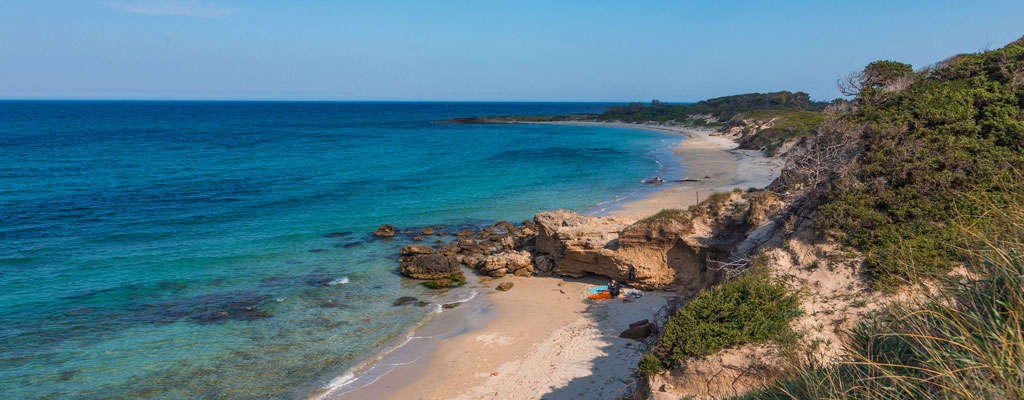
Bari
If Lecce is the south’s Florence, Bari is its Bologna, a historic but forward-looking town with a high percentage of young people and migrants lending it vigour. More urban than Lecce and Brindisi, with grander boulevards and better nightlife, Bari supports a large university, an opera house and municipal buildings that shout confidence.
Valle d'Itria
Between the Ionian and Adriatic coasts rises the great limestone plateau of the Murgia (473m). It has a strange karst geology: the landscape is riddled with holes and ravines through which small streams and rivers gurgle, creating what is, in effect, a giant sponge. At the heart of the Murgia lies the idyllic Valle d'Itria.
Brindisi
Like all ports, Brindisi has its seamy side, but it's also surprisingly slow paced and balmy, particularly along the palm-lined Corso Garibaldi, which links the port to the train station, and the promenade stretching along the interesting lungomare (seafront).
Albero Bello
Unesco World Heritage Site Alberobello resembles an urban sprawl – for gnomes. The zona dei trulli on the westernmost of the town's two hills is a dense mass of 1500 beehive-shaped houses, white-tipped as if dusted by snow. These dry-stone buildings are made from local limestone; none are older than the 14th century. Inhabitants do not wear pointy hats, but they do sell anything a visitor might (or might not) want, from miniature trulli to woollen shawls.
Marina Franca
The old quarter of this town is a picturesque scene of winding alleys, blinding white houses and blood-red geraniums. There are graceful baroque and rococo buildings here too, plus airy piazzas and curlicue ironwork balconies that almost touch above the narrow streets.
Taranto
The once-mighty Greek-Spartan colony of Taras is, today, a city of two distinct parts – a mildewed centro storico on a small artificial island protecting a lagoon (the Mar Piccolo), and a swankier new city replete with wide avenues laid out in a formal grid. The contrast between the two is sudden and sharp: the diminutive old town with its muscular Aragonese castle harbours a downtrodden, almost derelict air, while the larger new city is busier, plusher and bustling with commerce.
Gallipoli
Like Taranto, Gallipoli is a two-part town: the modern hub is based on the mainland, while the older centro storico inhabits a small island that juts out into the Ionian Sea. With a raft of serene baroque architecture usurped only by Lecce, it is, arguably, the prettiest of Salento’s smaller settlements.
Trani
Known as the 'Pearl of Puglia', beautiful Trani has a sophisticated feel, particularly in summer when well-heeled visitors pack the array of marina-side bars. The marina is the place to promenade and watch the white yachts and fishing boats in the harbour, while the historic centre, with its medieval churches, glossy limestone streets, historic Jewish quarter and faded yet charming palazzi is an enchanting area to explore. But it's the cathedral, pale against the deep-blue sea, that is the town's most arresting sight.
Otranto
Bloodied and bruised by an infamous Turkish massacre in 1480, Otranto is best appreciated in its amazing cathedral, where the bones of 813 martyrs are displayed in a glass case behind the altar. Less macabre is the cathedral’s other jaw-dropper, its medieval mosaic floor, which rivals the famous early Christian mosaics of Ravenna in its richness and historical significance.
Polignano A Mare
Dip into this spectacularly positioned small town if you can. Located around 34km south of Bari on the S16 coastal road, Polignano a Mare is built on the edge of a craggy ravine pockmarked with caves. The town is thought to be one of the most important ancient settlements in Puglia and was later inhabited by successive invaders ranging from the Huns to the Normans. On Sunday the logge(balconies) are crowded with day trippers from Bari who come here to view the crashing waves, visit the caves and crowd out the cornetterias (shops specialising in Italian croissants) in the atmospheric centro storico.
Salento
The Penisola Salentina, better known simply as Salento, is hot, dry and remote, retaining a flavour of its Greek past. It stretches across Italy's heel from Brindisi to Taranto and down to Santa Maria di Leuca. Here the lush greenery of Valle d'Itria gives way to flat, ochre-coloured fields hazy with wildflowers in spring, and endless olive groves.
Lecce
If Lecce is the south’s Florence, Bari is its Bologna, a historic but forward-looking town with a high percentage of young people and migrants lending it vigour. More urban than Lecce and Brindisi, with grander boulevards and better nightlife, Bari supports a large university, an opera house and municipal buildings that shout confidence.
